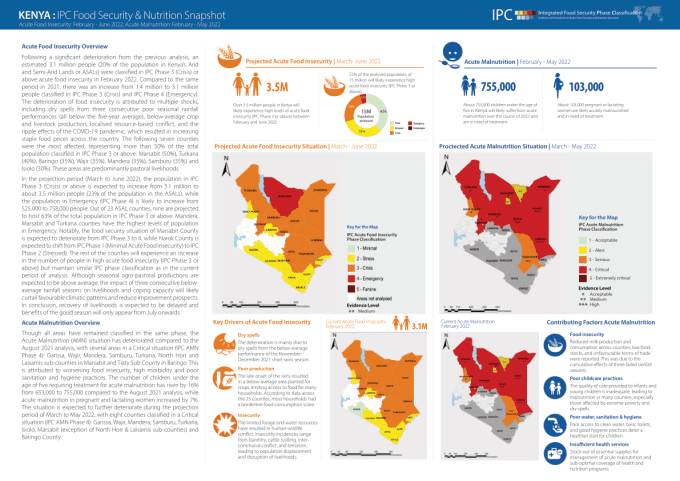Following a big deterioration from the earlier evaluation, an estimated 3.1 million folks (20% of the inhabitants in Kenya’s Arid and Semi-Arid Lands or ASALs) have been labeled in IPC Section 3 (Disaster) or above acute meals insecurity in February 2022. In comparison with the identical interval in 2021, there was a rise from 1.4 million to three.1 million folks labeled in IPC Section 3 (Disaster) and IPC Section 4 (Emergency).
The deterioration of meals insecurity is attributed to a number of shocks, together with dry spells from three consecutive poor seasonal rainfall performances (all beneath the five-year common), below-average crop and livestock manufacturing, localised resource-based battle, and the ripple results of the COVID-19 pandemic, which resulted in rising staple meals costs throughout the nation. The next seven counties have been probably the most affected, representing greater than 50% of the entire inhabitants labeled in IPC Section 3 or above: Marsabit (50%), Turkana (40%), Baringo (35%), Wajir (35%), Mandera (35%), Samburu (35%) and Isiolo (30%). These areas are predominantly pastoral livelihoods.
Comments
0 comments
